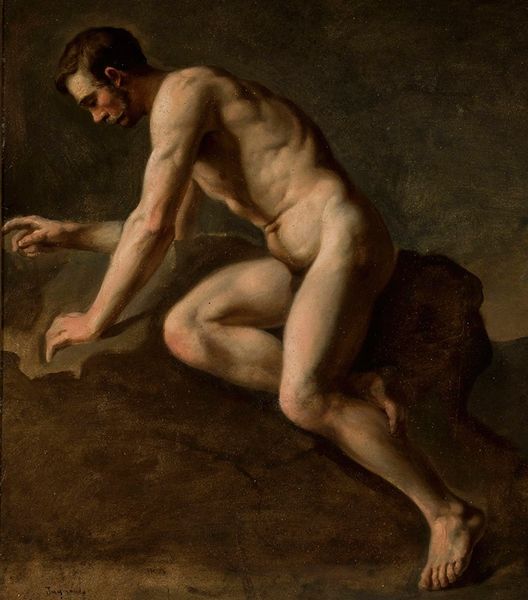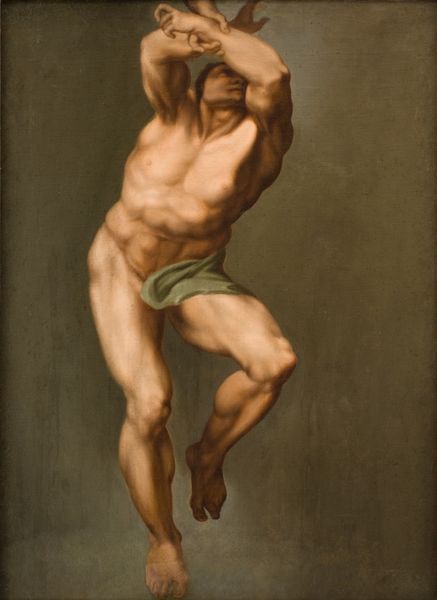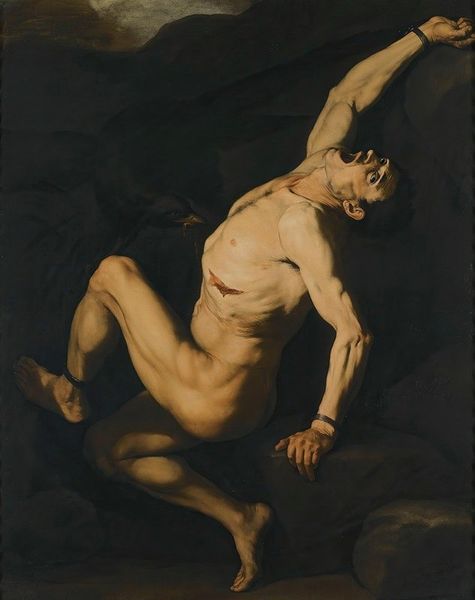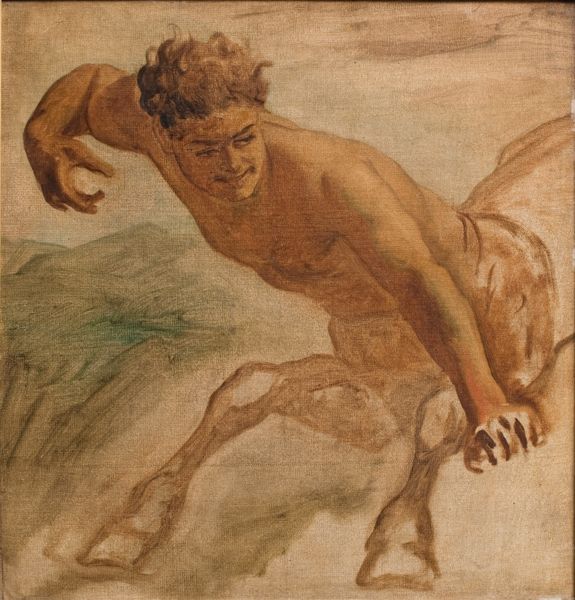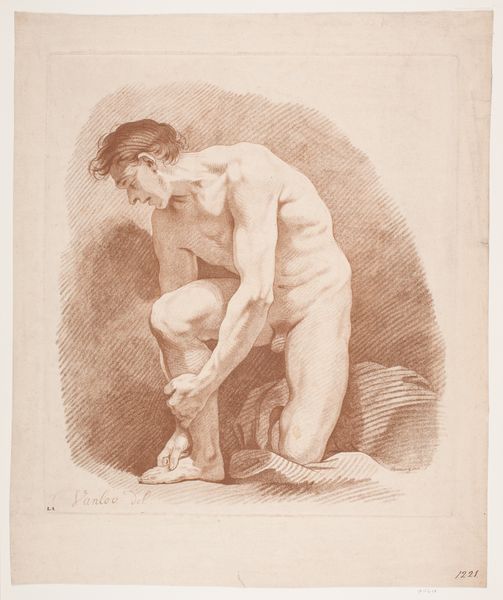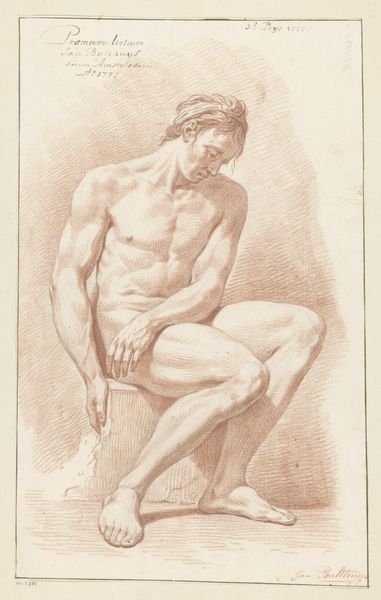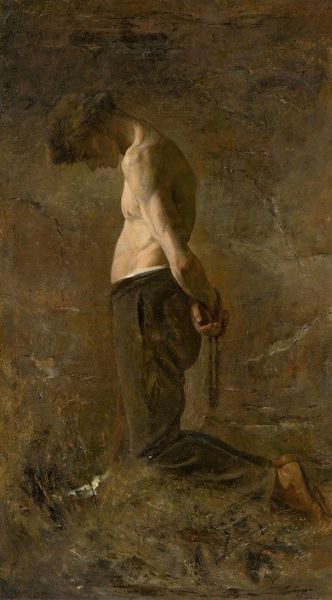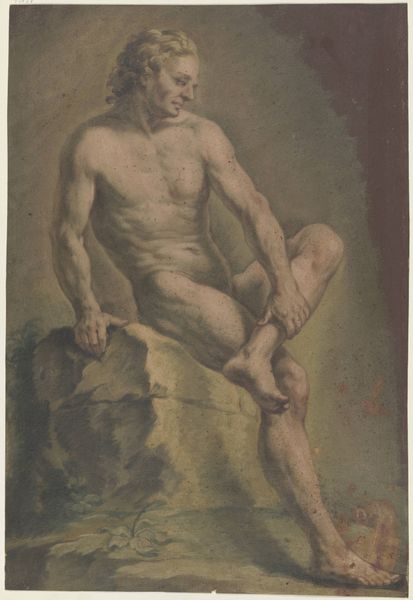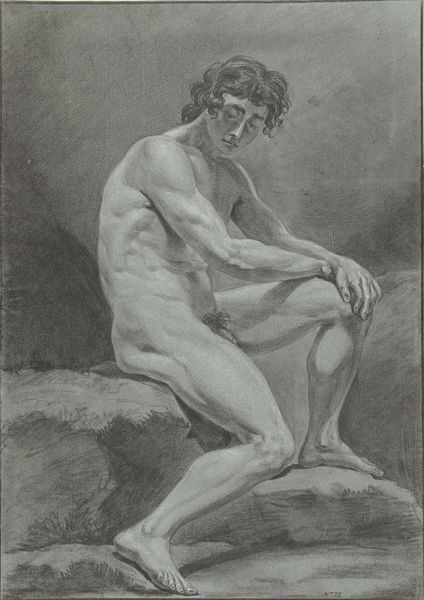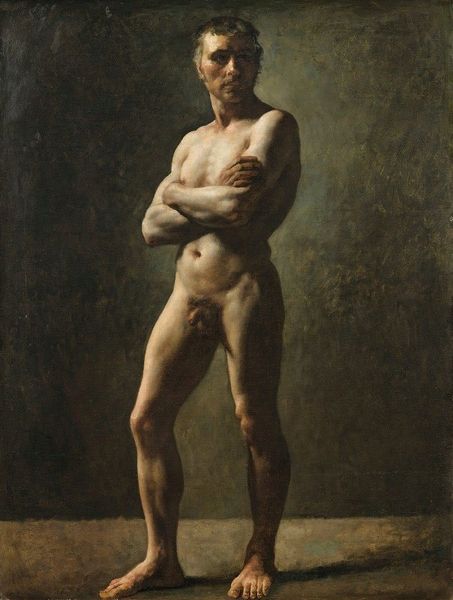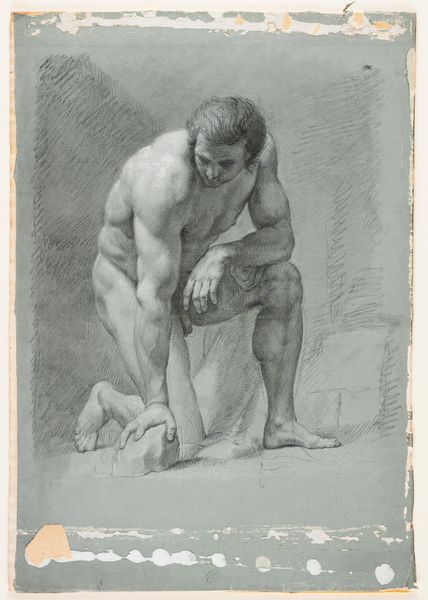
Dimensions: 158 cm (height) x 97 cm (width) (Netto)
Curator: The palette feels quite restricted; all browns and muted earth tones. What's your read on it? Editor: Dreary, almost melancholic. It's interesting to observe the subject’s positioning within that rugged, austere setting. Before we proceed, for our listeners, let’s set the scene: this oil painting on canvas is titled "Ung italiensk mandsfigur i klippelandskab", translating to "Young Italian Male Figure in Rocky Landscape," by L.A. Schou, dating from 1865-1867. It's part of the SMK - Statens Museum for Kunst collection. Curator: Considering it was produced during a period of increasing industrialization, there's a palpable emphasis on manual labor, even hardship. Observe the muscular figure struggling with what seems to be clothing; the painting almost feels like a study in textures, from the man's skin to the drapery. How do you interpret the depiction of the male nude here, especially within the historical context? Editor: That figure in that light makes me think of the classic heroic nudes but emptied out of its grand narratives, perhaps. The work seems rooted in the Realist aesthetic and simultaneously hinting at a more romanticized past. Curator: It highlights a certain aestheticizing of the "working class," reflecting, in part, bourgeois ideals imposed upon manual labor. The raw materiality of oil paint and coarse canvas supports such analysis; labor becomes something represented rather than experienced by the presumed viewer. Editor: But it's the tension between romanticized landscape and the artist's somewhat objective observation of human anatomy and the realities of everyday labor which makes this compelling. It makes you consider class and social forces in a more profound sense. It becomes clear the Italian figure has nothing and stands completely bare. Curator: I see how the romantic and real struggle within this particular composition, highlighting the socio-political dynamic intrinsic to art. This examination makes us reflect on whose stories get represented, and in which light, within public collections. Editor: A critical observation indeed. Now, having navigated that intricate dialogue between form and meaning, one hopes our listeners glean as much pleasure and insight from this painting as we have. Curator: A fruitful intersection of materialism and historical awareness indeed. I hope we offered you some food for thought about representation and materiality in 19th century painting.
Comments
No comments
Be the first to comment and join the conversation on the ultimate creative platform.
